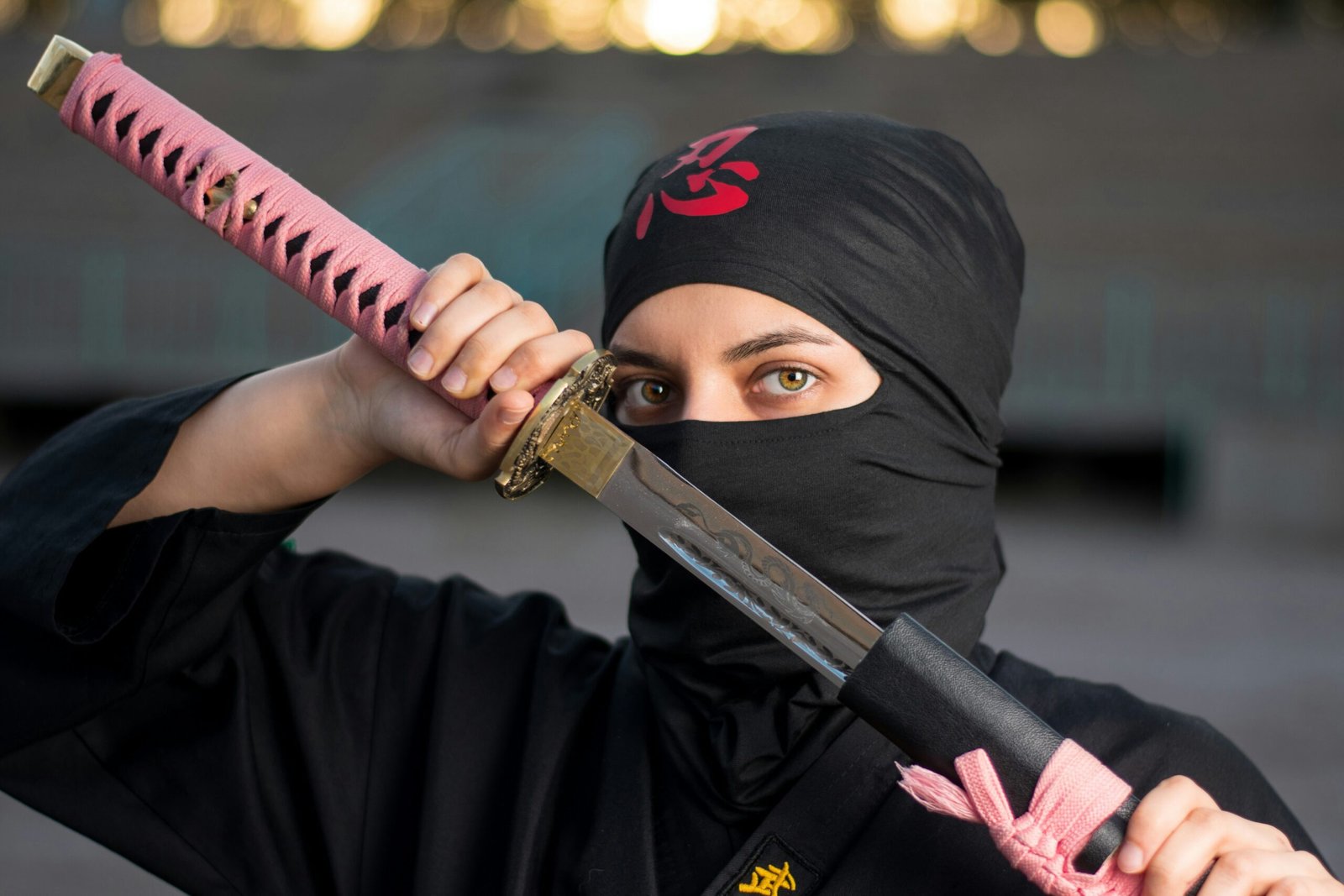
lwedninja
Introduction to Lwedninja
Lwedninja represents a contemporary reimagining of the traditional values and practices associated with ninjutsu, the renowned art of the ninja. At its core, Lwedninja embodies the principles of agility, mindfulness, and strategic thinking, which are essential qualities for successfully navigating the challenges of modern life. The need to blend these ancient teachings with today’s fast-paced world has given rise to a lifestyle that not only honors the heritage of ninjutsu but also equips individuals with the tools necessary to thrive in contemporary settings.
The significance of Lwedninja lies in its ability to foster a holistic approach to living, where physical prowess is complemented by mental acuity and emotional resilience. As individuals adopt Lwedninja principles, they are encouraged to cultivate agility—not just in the physical sense, but also in their ability to adapt to change and seize opportunities as they arise. Mindfulness, a cornerstone of this lifestyle, promotes a deeper awareness of oneself and the environment, allowing practitioners to respond thoughtfully rather than react impulsively.
Moreover, Lwedninja serves as a reminder of the strategic thinking that was crucial for the historical ninja. In today’s competitive landscape, the ability to analyze situations, anticipate challenges, and formulate effective responses is invaluable. By integrating techniques derived from ninjutsu, individuals can develop a mindset that emphasizes preparation and innovation. This fusion of history and modernity positions Lwedninja as a relevant framework for personal and professional development.
As we delve further into the various aspects of the Lwedninja lifestyle, it becomes clear that this approach offers not only physical training but also mental fortitude and a profound understanding of one’s place in a constantly evolving world.
Historical Background of Ninjas
The origins of ninjas, or shinobi, can be traced back to the feudal periods of Japan, primarily during the 15th to 17th centuries. They emerged as covert agents skilled in espionage, sabotage, guerrilla warfare, and assassination. The socio-political environment of the time demanded such skills; constant power struggles among feudal lords, known as daimyōs, and the need for intelligence in military engagements gave rise to a profession that was both elusive and essential.
Ninjas were often recruited from the lower social classes, including peasants and mercenaries, as they were more adept at blending into the rural landscapes and urban populations. Their training was a comprehensive undertaking, involving not just martial arts but also survival skills, unarmed combat, and the art of stealth. In many cases, ninja clans operated independently, which allowed them to develop unique techniques and methodologies, ultimately culminating in a diverse range of skills that could be utilized in various scenarios.
Among the most famous styles of ninjutsu practiced by these historical figures were Iga-ryū and Kōka-ryū, which specialized in espionage and guerilla tactics. The techniques encompassed various weapons, including shuriken (throwing stars), katana, and explosives, enabling ninjas to carry out their missions with efficiency and precision. Furthermore, the mystical elements often associated with ninjas, such as invisibility and supernatural agility, were largely popularized by folklore and entertainment, distinguishing the mythological ninja from the historical figure.
The historical significance of ninjas extends beyond mere combat prowess; they represented the complexities of loyalty, betrayal, and survival in an ever-changing political landscape. As Lwedninja seeks to honor these enduring traditions, it also reflects on the evolution of ninjutsu in modern society, highlighting how the essence of the ninja lifestyle continues to resonate with contemporary practitioners.
Core Principles of Lwedninja
The philosophy of lwedninja encompasses several core principles that serve as the foundation for its teachings. These principles—agility, mindfulness, and strategic thinking—are not only derived from traditional ninja practices but are also highly relevant in addressing contemporary life challenges. By understanding and integrating these key concepts, individuals can foster holistic personal growth.
Agility, in the context of lwedninja, extends beyond physical flexibility. It embodies the ability to adapt swiftly to changing circumstances, whether in personal endeavors or professional settings. This principle emphasizes the importance of resilience and the willingness to embrace change. Individuals who cultivate agility can navigate obstacles more efficiently, allowing them to thrive in an ever-evolving environment.
Mindfulness is another essential component of lwedninja. This principle encourages individuals to remain present and fully engage with their surroundings and experiences. Practicing mindfulness enables people to develop a deeper awareness of their thoughts and emotions, fostering emotional intelligence. The application of mindfulness can lead to reduced stress levels, enhanced focus, and improved decision-making, all of which are crucial for navigating modern life’s complexities.
Strategic thinking represents the final cornerstone of lwedninja philosophy. It emphasizes the importance of foresight and planning in achieving personal and professional goals. By adopting a strategic mindset, individuals can evaluate various options, understand potential outcomes, and make informed decisions. This approach not only encourages critical thinking but also cultivates a sense of purpose and direction in one’s life.
As individuals integrate the principles of agility, mindfulness, and strategic thinking into their daily routines, they align themselves with the lwedninja philosophy. This alignment fosters a well-rounded approach to personal development, equipping individuals to face modern challenges with confidence and poise.
Traditional Ninja Skills and Techniques
Ninjutsu, the art practiced by the ninjas of feudal Japan, encompasses a wide range of skills and techniques that were essential for survival and success in various challenging environments. Among the most notable skills are stealth, martial arts, and espionage tactics. Stealth is perhaps the most recognizable aspect of the ninja’s repertoire, allowing them to move undetected and gather intelligence. This skill involves not only physical agility but also a deep understanding of the environment, such as shadows and sound, which are critical for blending in seamlessly.
Martial arts form another core component of the traditional ninja skill set. Unlike single-discipline martial arts, ninjutsu incorporates a blend of techniques drawn from various styles, including striking, grappling, and weaponry. This versatility allows practitioners to adapt to different combat scenarios, leveraging their surroundings to gain an advantage. The modern interpretation of these martial arts, particularly through frameworks like Lwedninja, emphasizes not only physical conditioning but mental discipline and strategic thinking.
Espionage tactics are equally vital to the ninja’s legacy. Traditionally, ninjas were tasked with reconnaissance and intelligence gathering, often utilizing disguises, deception, and infiltration techniques. In the context of Lwedninja, these historical espionage skills are being preserved and adapted for contemporary needs, focusing on situational awareness and information analysis, which are applicable in today’s fast-paced world.
Incorporating these traditional skills into the Lwedninja philosophy showcases a commitment to not only maintaining the ancient arts but also evolving them to meet the demands of modern life. As practitioners strive for mastery in these domains, they foster a deeper understanding of both the historical significance and contemporary relevance of ninja techniques.
Modern Adaptations of Ninja Tools
The legendary ninjas of ancient Japan are commonly associated with a distinctive array of tools and weaponry that facilitated their stealthy operations. These tools have evolved over the centuries, leading to modern adaptations that still capture the spirit of the ninja lifestyle, now referred to as lwedninja. Contemporary practitioners often turn to these modified tools for both training and practical applications.
Traditionally, weapons such as the shuriken, katana, and naginata were essential components of a ninja’s arsenal. The shuriken, often depicted as a star-shaped projectile, has been adapted into modern throwing sports, where enthusiasts utilize precision and agility similar to their historic counterparts. Nowadays, lightweight materials enhance performance while ensuring safety during practice sessions, further contributing to the lwedninja’s focus on skill development.
Similarly, the katana remains a symbol of martial prowess and discipline. In today’s context, this iconic sword is often used in martial arts training, emphasizing the importance of form and technique. Some lwedninja enthusiasts incorporate modern martial arts practices that integrate various disciplines, allowing for a comprehensive approach to training with the katana or its synthetic counterparts. These modern adaptations maintain the cultural integrity of the weapon while making it accessible to a broader audience.
Technological advancements have also reshaped the landscape of ninja tools. For instance, tools such as drones and advanced surveillance equipment have become invaluable to modern lwedninja practitioners. These technologies enable enthusiasts to train in stealth and reconnaissance in ways that mirror traditional tactics but with a contemporary twist. Thus, the blend of historical weaponry and modern innovations fosters a richer understanding and appreciation of the lwedninja lifestyle, allowing practitioners to tailor their training to align with the evolving demands of today’s world.
The Mindfulness Aspect in Lwedninja
Mindfulness plays a pivotal role in lwedninja, an approach to life influenced by traditional ninjutsu practices. Rooted in ancient wisdom, techniques have been adapted to help individuals develop mental clarity, emotional resilience, and enhanced focus. The essence of lwedninja encourages practitioners to remain present and engaged in their daily activities, promoting a holistic sense of well-being.
At its core, the mindfulness practiced within lwedninja involves techniques such as controlled breathing, focused attention, and meditative movements. These techniques are similar to those employed in martial arts and are designed to ground individuals in the moment. For instance, breath control aids in reducing anxiety and stress, allowing practitioners to navigate challenging situations with a calm mind. Such skills are vital for anyone wishing to adapt to the fast-paced demands of modern life, making mindfulness in lwedninja especially relevant today.
Moreover, lwedninja emphasizes emotional resilience as a fundamental aspect of the ninja philosophy. By engaging in activities that foster self-awareness and introspection, individuals cultivate a deeper understanding of their emotions and reactions. This process ultimately allows practitioners to respond to life’s challenges with greater equanimity and insight. The practice of meditation, a common element in lwedninja, serves as a catalyst for this development, allowing individuals to observe their thoughts without judgment. Through ongoing practice, one can develop a heightened sense of perspective and adaptability.
In embracing the mindfulness aspect of lwedninja, individuals can integrate these mental practices into their daily lives, leading to personal growth and enhanced emotional well-being. As more seekers turn to lwedninja for its balance of physical prowess and psychological strength, it becomes evident that the mindfulness it encompasses offers valuable tools for living with intention in today’s world.
Lwedninja in Popular Culture
The portrayal of ninjas, and specifically the concept of lwedninja, has permeated various facets of popular culture, including films, television shows, literature, and video games. These representations often reflect a blend of historical traditions and contemporary interpretations, contributing significantly to society’s perception of ninja lore. In many action films, ninjas are depicted as highly skilled warriors, often shrouded in mystique, which enhances their allure and impacts public admiration for these figures. This cinematic rendition tends to emphasize agility, stealth, and martial prowess, thereby reinforcing the notion of lwedninja as a symbol of ultimate skill and discipline.
Television series further explore the themes associated with ninjas, incorporating narrative arcs that highlight their cunning and strategic abilities. Shows often portray lwedninja as central characters who possess not only physical strength but also a code of ethics that guides their actions. Such representations provide a nuanced perspective, suggesting that traditional ninja values may include loyalty and honor, connecting the modern interpretation with classic themes rooted in historical ninja culture.
Literature has also played a significant role in shaping the public’s perception of ninjas. Novels and comic books that delve into stories involving lwedninja frequently explore the psychological aspects of these characters, presenting them as complex figures navigating moral dilemmas. The literary representation of ninjas can bridge the gap between traditional storytelling and contemporary themes, appealing to a diverse audience while preserving essential elements of the ninja mythos.
Lastly, video games have fanned the flames of this cultural fascination, immersing players in worlds where lwedninja tactics are not only an art form but also a means of survival. Games often require players to adopt ninja-like strategies, which reaffirms the notion of stealth and skill while allowing for interactive storytelling. The popularity of such games demonstrates the lasting impact ninjas have on modern culture, cementing their status as iconic figures that continue to inspire curiosity and admiration.
Community and Training Opportunities
The Lwedninja community represents a vibrant collective of individuals who embody the modern ninja lifestyle. It is characterized by its inclusive nature, offering a range of organizations, programs, and workshops aimed at those interested in pursuing the principles of Lwedninja. These communities focus not just on physical skills but also on personal development, discipline, and mental fortitude.
Various organizations have emerged to support aspiring Lwedninja practitioners, providing structured environments and resources for training. These include local clubs, online forums, and national associations that foster connections among enthusiasts. By joining these groups, individuals gain access to a wealth of knowledge, mentorship, and shared experiences. The collaborative atmosphere helps participants to learn from each other, exchange insights, and hold one another accountable as they work toward mastering the lwedninja lifestyle.
Training programs tailored specifically for the Lwedninja philosophy emphasize a holistic approach, encompassing physical training, mental resilience, and tactical awareness. Workshops are frequently organized, where experienced instructors share their expertise in various disciplines, from martial arts to mindfulness techniques. These gatherings provide a hands-on environment where participants can refine their skills, enhance their understanding, and build camaraderie with like-minded practitioners.
Moreover, the power of community support cannot be overstated. Engaging with fellow Lwedninja enthusiasts not only enriches the training experience but also fosters lasting friendships and networks. The exchange of ideas, strategies, and motivations among peers plays a crucial role in sustaining individual journeys within the Lwedninja framework. In essence, the community is a cornerstone for anyone striving to embrace the multifaceted aspects of the modern ninja lifestyle. Together, they forge stronger paths toward mastery and fulfillment in their pursuits.
Conclusion: The Legacy of Lwedninja
In concluding our exploration of the Lwedninja lifestyle, it is essential to reflect on the remarkable blend of tradition and innovation that characterizes this modern interpretation of the age-old ninja ethos. The principles associated with lwedninja resonate strongly in today’s fast-paced world, encouraging a holistic approach that integrates physical agility, mental clarity, and strategic acumen. These core values empower individuals to navigate contemporary challenges with resilience and mindfulness.
The legacy of lwedninja goes beyond mere physical training; it encompasses a philosophy of living that emphasizes the importance of being present and adaptable in various life situations. By embodying agility, practitioners learn to respond to changing circumstances with poise and effectiveness, skills immensely valuable in both personal and professional realms. Moreover, mindfulness fosters a deeper connection with oneself and surroundings, promoting emotional well-being and clarity of thought, which are indispensable in navigating the complexities of modern life.
Furthermore, strategic thinking, akin to the tactical mindset of a traditional ninja, encourages individuals to approach challenges with a thoughtful, composed perspective. This strategic approach fosters problem-solving capabilities and equips individuals with the tools to creatively assess risks and opportunities. As we embrace the principles of the lwedninja lifestyle, we are inspired to rethink our everyday practices and the decisions we make, striving to live with intention and purpose.
Ultimately, the legacy of lwedninja extends an invitation to all to integrate these values into their daily lives. Whether through physical training, mindfulness exercises, or strategic planning, individuals can cultivate a lifestyle that honors the resilience of warriors while embodying the adaptability demanded by contemporary society. This integration not only enhances personal growth but also contributes to a broader culture of agility and mindfulness, forging pathways toward a more conscious and intentional existence.

